Animals That Carry Babies in Pouches Animals That Carry Babies in Pouches on Their Backs
ten Animal Mothers That Behave Babies on Their Backs
Get back

A human mother carries a growing fetus in her womb for approximately nine months, but fifty-fifty after the baby is born, the helpless newborn still needs to be carried. In fact, many fauna mothers send their immature, sometimes many dozens of them at a time, and sometimes lugging them around for years.
Animals tote their babies in a multifariousness of ways — marsupials like kangaroos, koalas and wallabies have specialized pouches that cradle their nevertheless-developing infants, while fish, crocodilians and certain mammals often send their young using their mouths.
But a surprising variety of animals carry their young on their backs, and for Mother'due south Day, Live Scientific discipline took a closer look at some of these "piggybacking" mothers (but despite this behavior's nickname, it is not proficient by hogs or pigs).
Chimpanzee
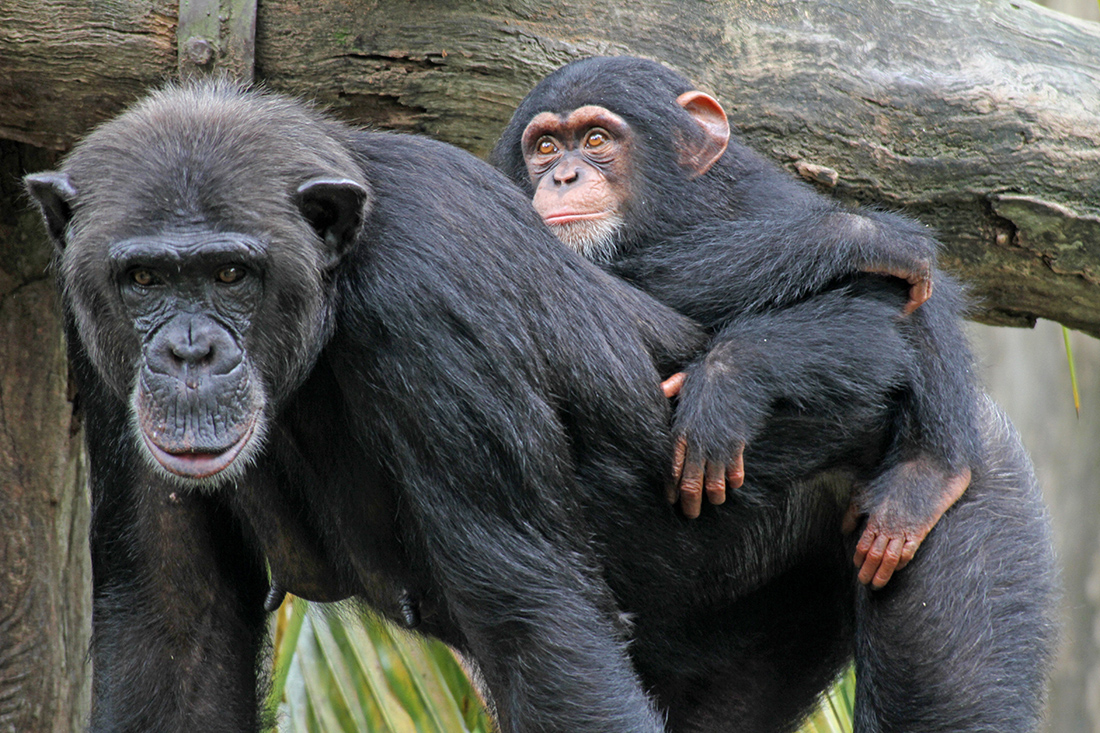
Smashing apes — gorillas, chimpanzees, bonobos and orangutans — are our closest primate relatives, and all are known to comport their young on their backs. In most primate species, newborns are unable to walk or care for themselves, and are not protected by nests. Their slow evolution requires that their mothers keep them close, for frequent nursing and for transportation and protection. Infants are commonly transferred from the front of the mother'south body to her back when they are strong enough to grip her securely — typically when they are few months old, according to a study published April 2008 in the journal Naturwissenschaften.
Chimpanzees are the most social of the great apes, and they too demonstrate a long flow of dependency betwixt mothers and offspring. Infants nurse for up to five years, and oft stay close to their mothers for several more than years subsequently they are fully weaned, according to the nonprofit conservation organization Center for Bang-up Apes.
Horned marsupial frog

The term "marsupial" typically conjures images of mammals that tote their young in furry pouches, such as kangaroos, koalas, and other denizens of the Australian continent. Merely the rare and endangered horned marsupial frog (Gastrotheca cornuta), which lives in the forests of Panama, Columbia and Ecuador, also bears a stretchy baby-bearing pouch — on her back.
Within her pouch, the mother frog incubates a small clutch of the largest known amphibian eggs, which mensurate almost 0.4 inches (ten millimeters) in diameter. To put that into perspective, the mother'due south entire body measures near 3 inches (77 mm), herpetologist Jay G. Vicious, an offshoot professor of biology at San Diego State Academy, wrote in "The Amphibians and Reptiles of Costa Rica" (The Academy of Chicago Press, 2002).
Later a male fertilizes the females' eggs, he guides them into her pouch, where the embryos develop into froglets. The pouch is a permanent construction, but it changes greatly during reproduction, with separate chambers forming to encase each tiny embryo. It is thought that air circulates to the developing froglets' gills through a network of veins in the pouch, Savage wrote.
Swan
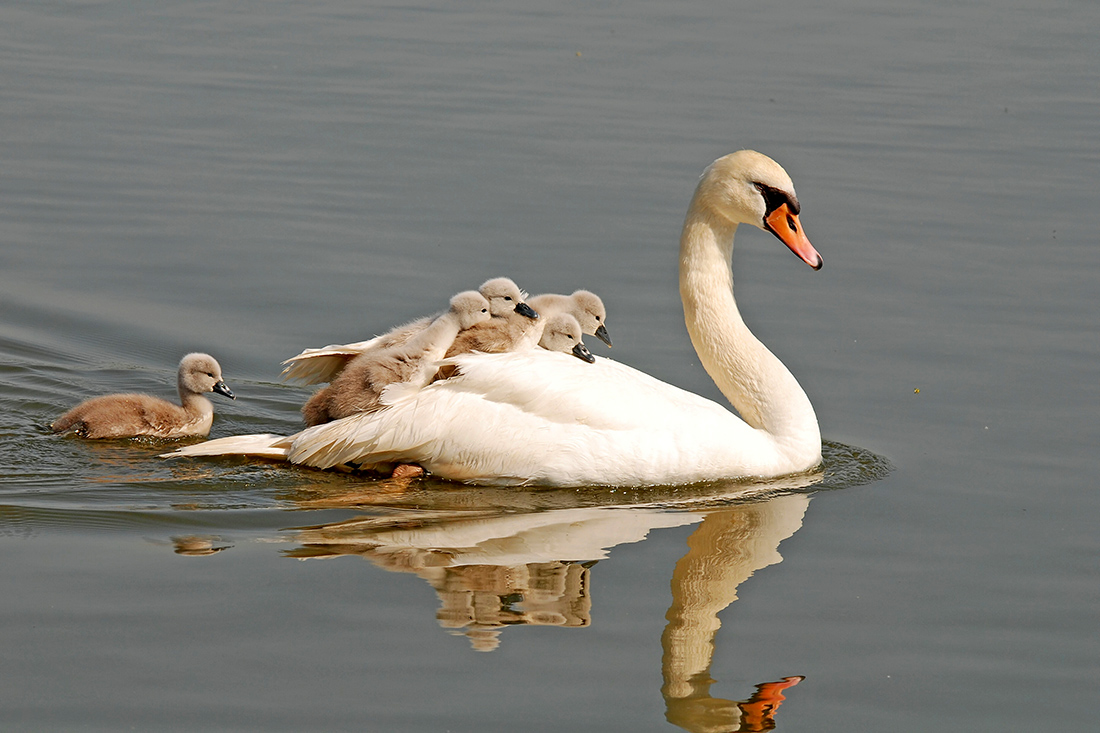
Swans, the earth's largest waterfowl, are widely recognized for their loyalty to their mates and are known to pair up for life. But swan mothers accept also been observed providing especially devoted attention to their young — known as cygnets — past serving as a temporary flotation device to assistance the little ones as they learn to swim.
Of the half-dozen knowns swan species, orange-billed mute swans (Cygnus olor) are the most common sight, visible in ponds and lakes in Europe, northern-primal Asia and in North America, where they were introduced in the belatedly 19th century. They were brought to the U.S. as "decorative" birds in zoos, parks and private estates, but feral populations spread to the Northeast, Mid-Atlantic, Great Lakes, and Pacific Northwest regions, according to the Cornell Lab of Ornithology.
Female swans typically lay five to 7 eggs, which incubate for 36 to 38 days, according to the University of Michigan Museum of Zoology. Cygnets are covered in white or grayish down, and tin swim and dive about 24 hours after hatching. Their mothers and fathers share parental care, oft carrying the cygnets on their backs, with their wings curled protectively over their babies.
Wolf spider

Wolf spiders practice a form of babe intendance that is unique among spiders. As soon as the spiderlings emerge from their egg sac, they immediately clamber onto their mother's dorsum, where they remain for up to two weeks, researchers reported in a study of several wolf spider species, published in 1964 in the periodical Arkansas Academy of Science Proceedings.
The scientists observed that the first spiderling usually hesitated equally information technology poked its head out of a pigsty in the egg sac. Merely information technology presently scrambled out, itch over its female parent's body until it settled on her dorsum, and all of its siblings followed shortly thereafter and crowded aboard. As many every bit 1,035 spiderlings piled on in the wolf spider species Lycosa rabida, the scientists discovered.
In one case the spiderlings were settled on their female parent's back, the scene could be quite chaotic, co-ordinate to the researchers.
"The egg sacs usually emptied within iii hours, and the spiderlings have stacked themselves on top of each other over the "mother's" abdomen, and may be spilling over onto the sides and onto her phalothorax — which keeps her busy, occasionally, brushing them out of her optics with her palpi," the study authors wrote.
Surinam toad
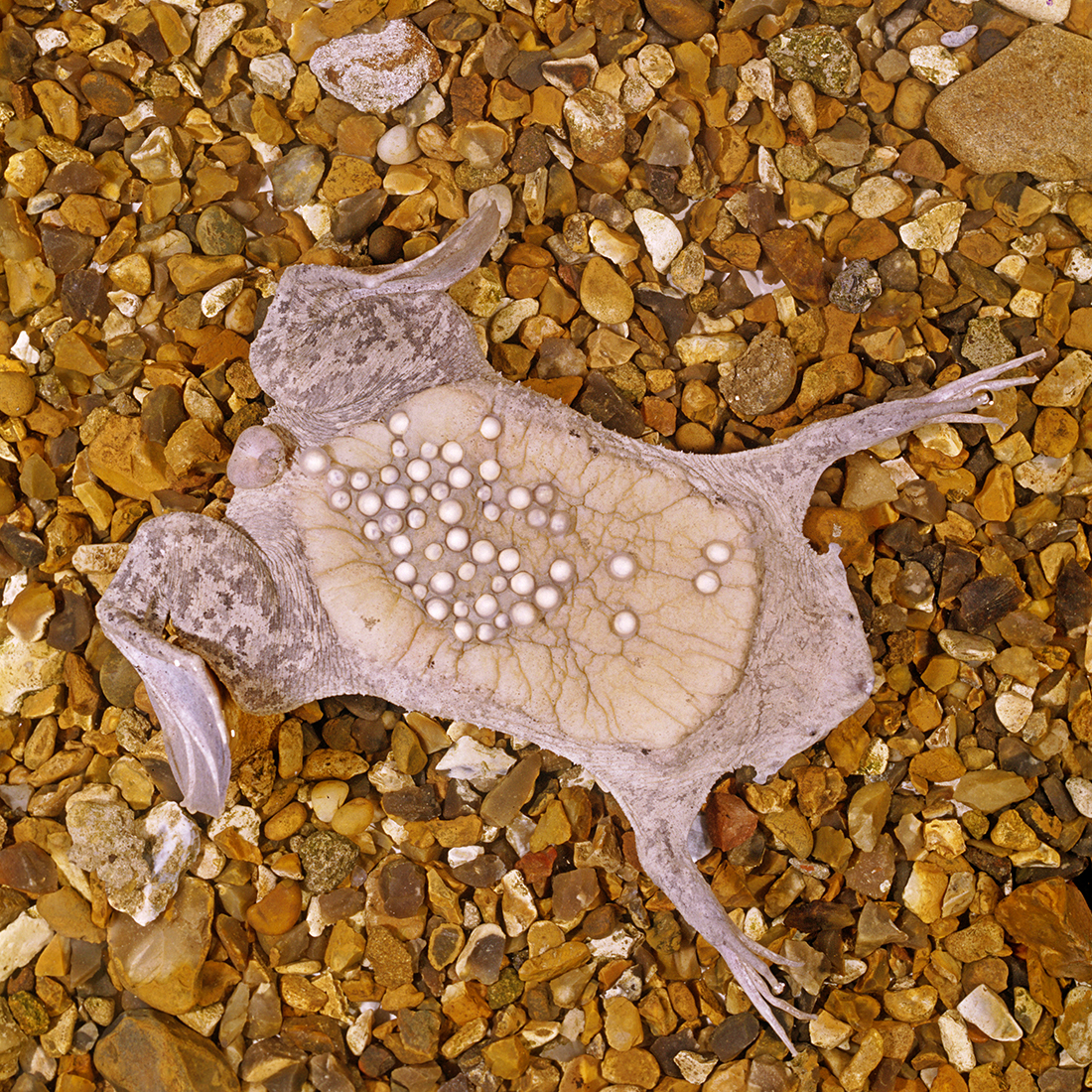
The grey, tongueless, triangle-headed and curiously apartment Surinam toad (Pipa pipa) is almost entirely aquatic, living in lowland rainforests in Republic of bolivia, Brazil, Colombia, Ecuador, the Guianas, Peru and Trinidad.
During mating season, the male helps the female to position upward to 100 fertilized eggs on her back, where they are overgrown by skin, according to the Encyclopedia of Life. While encased in her back, the embryos develop within the eggs equally tadpoles for around three to 4 months, finally bursting out of the mother's dorsum as tiny froglets that measure most 0.viii inches (2 centimeters) in length. After the leggy niggling ones emerge, the mother sheds her skin in grooming for the next mating season, the San Diego Zoo explained in a species description.
Opossum

Opossums are N America's but native marsupials. There are about 75 species in this family living in both North and South America, and one of the most widely distributed species is the Virginia opossum (Didelphis virginiana).
Females give birth to litters of approximately 4 to 25 young that are "dear-bee-sized," following an extremely short gestation period of 12 to thirteen days, according to a clarification published by Animal Diverseness Web (ADW). The newborns drag themselves into the female parent'due south pouch with their muscular front legs — only about eight of them will survive the journeying. Those that do, develop for about ii to three months and and so transfer to the female parent'southward back for another one to two months, equally they gradually wean and get more contained.
Scorpion

Keeping track of up to 100 babies is a daunting task for any female parent, and female scorpions do and then by carrying their scores of young — called scorplings — on their backs until the scorplings' starting time molt, according to a study published in 2011 in the European Journal of Entomology.
The scorplings are born alive, and their bodies, which look like tiny versions of developed scorpions' forms, are soft and pale. They go out their female parent'south dorsum after virtually 10 to 20 days, when their exoskeletons harden and darken.
Scorpion mothers sometimes savour an boosted benefit from bearing their babies on their backs — piece of cake admission to a quick snack. However, this type of cannibalism typically only happens when the female parent can't find any prey, the study authors wrote.
Behemothic anteater
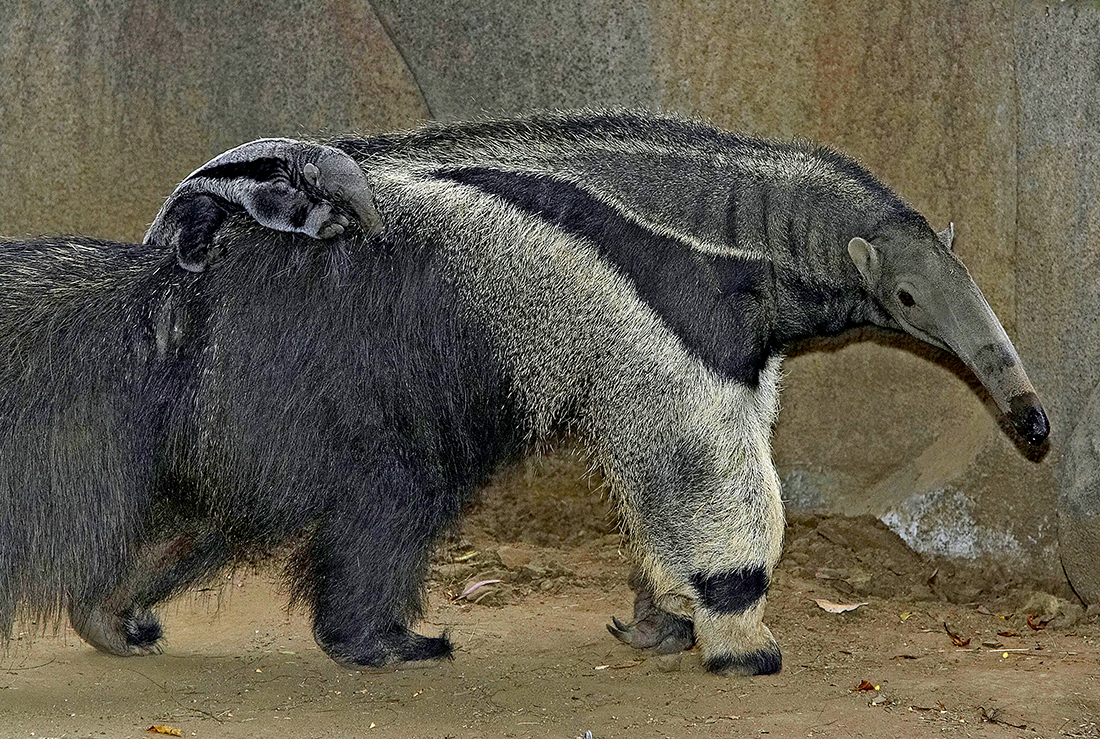
For the kickoff year of their lives, giant anteater young — known as "pups" — ofttimes ride on their mothers' backs, co-ordinate to a species description published online by the San Diego Zoo.
Giant anteaters (Myrmecophaga tridactyla),usually bear one pup at a time. Newborns weigh nearly iii pounds (1.4 kilograms) at birth and emerge covered in a full coat of hair. They stick close past their mothers for 4 weeks, nestling under her to nurse and clambering up onto her back for a lift whenever she moves around. Pups abound more independent later about one calendar month, but are withal frequent passengers on their mothers' backs, the San Diego Zoo explains, calculation that the pups will usually wean by the time they are ix months old, and get out their mothers at about two years old, when they are sexually mature.
Whip spider
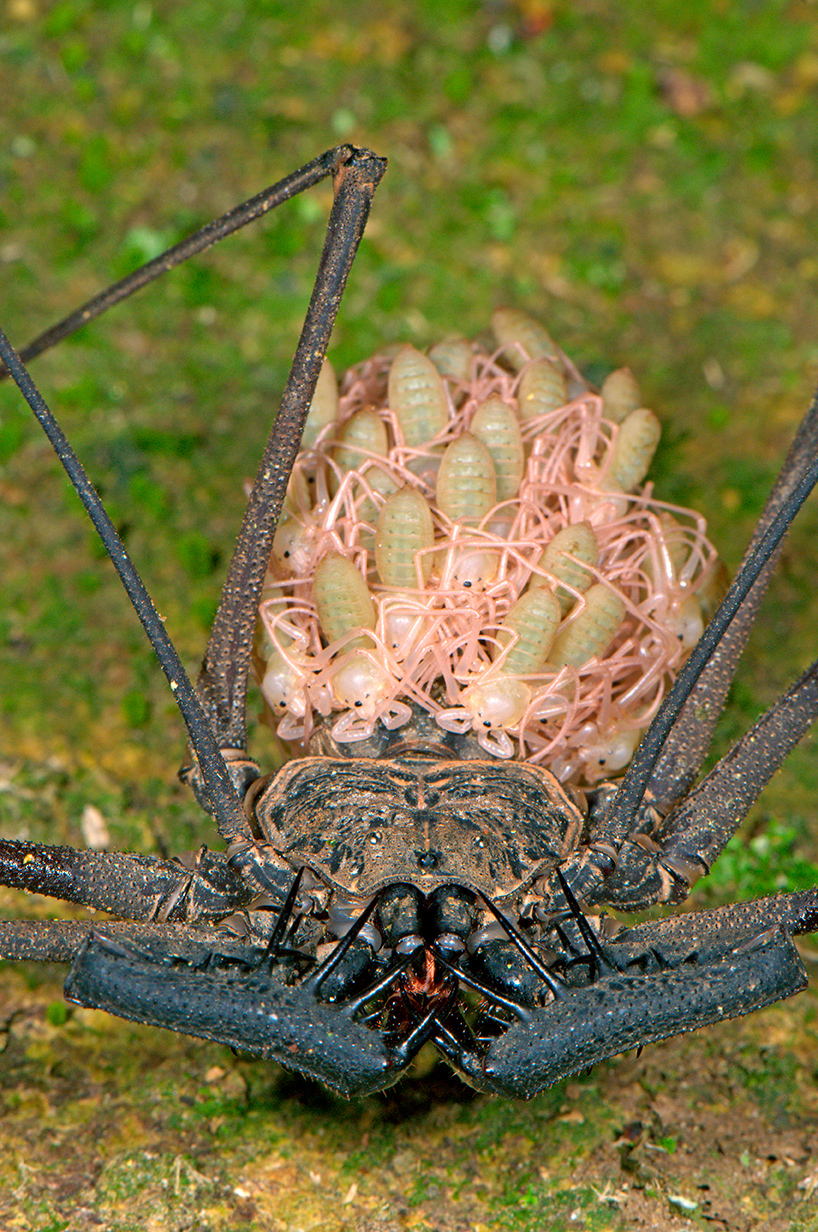
Likewise known equally tailless whip scorpions, whip spiders are not truthful spiders, merely rather belong to an arachnid group known as amblypygids, which contains over 155 species. Though they have eight limbs, but half-dozen are used for walking, while ii whip-similar appendages — which tin be several times as long as their bodies — act as sensory organs.
Females lay between 6 and threescore eggs, which they carry around in a leathery sac for around three months until the eggs hatch. When the babies first emerge, they are white and very soft, and cling to their female parent until after their next molt, according to a species description published online by the Cincinnati Zoo.
Banded horned tree frog
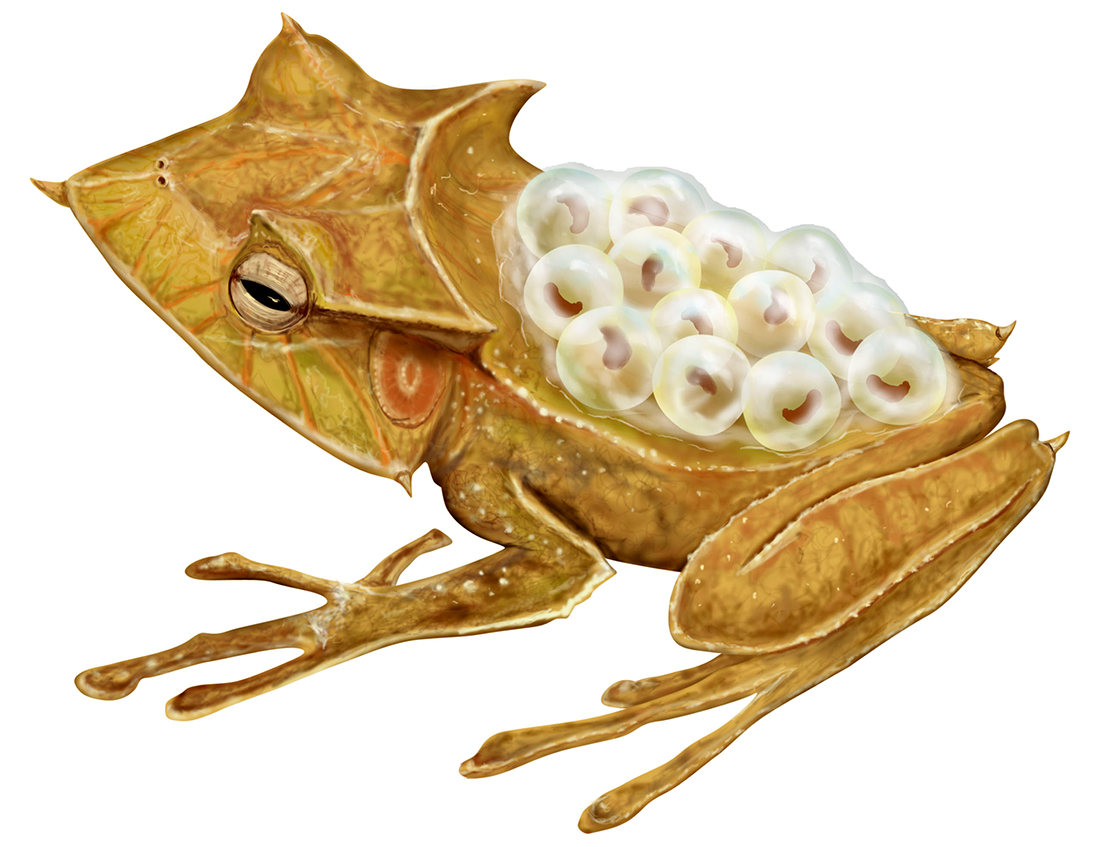
The banded horned tree frog (Hemiphractus fasciatus) has a distinctive triangular "helmet" adorning its head, and is found in parts of Ecuador, Panama and Colombia. It does not have a tadpole stage in its life cycle. Instead, fully-formed froglets — miniature versions of adults — sally subsequently developing from eggs attached to the skin on their mother's back, co-ordinate to a study published in 1974 in the journal Occasional Papers Museum of Natural History at the University of Kansas.
Females tin abound to be almost iii inches (69 millimeters) in length, and their eggs measure out nearly 0.two inches (between five and vi mm) in diameter. Afterwards the froglets have emerged from the eggs, depressions remain visible on the mother'due south dorsum, the study authors wrote.
Source: https://www.livescience.com/59073-10-animal-mothers-that-carry-babies-on-their-backs.html

0 Response to "Animals That Carry Babies in Pouches Animals That Carry Babies in Pouches on Their Backs"
Postar um comentário